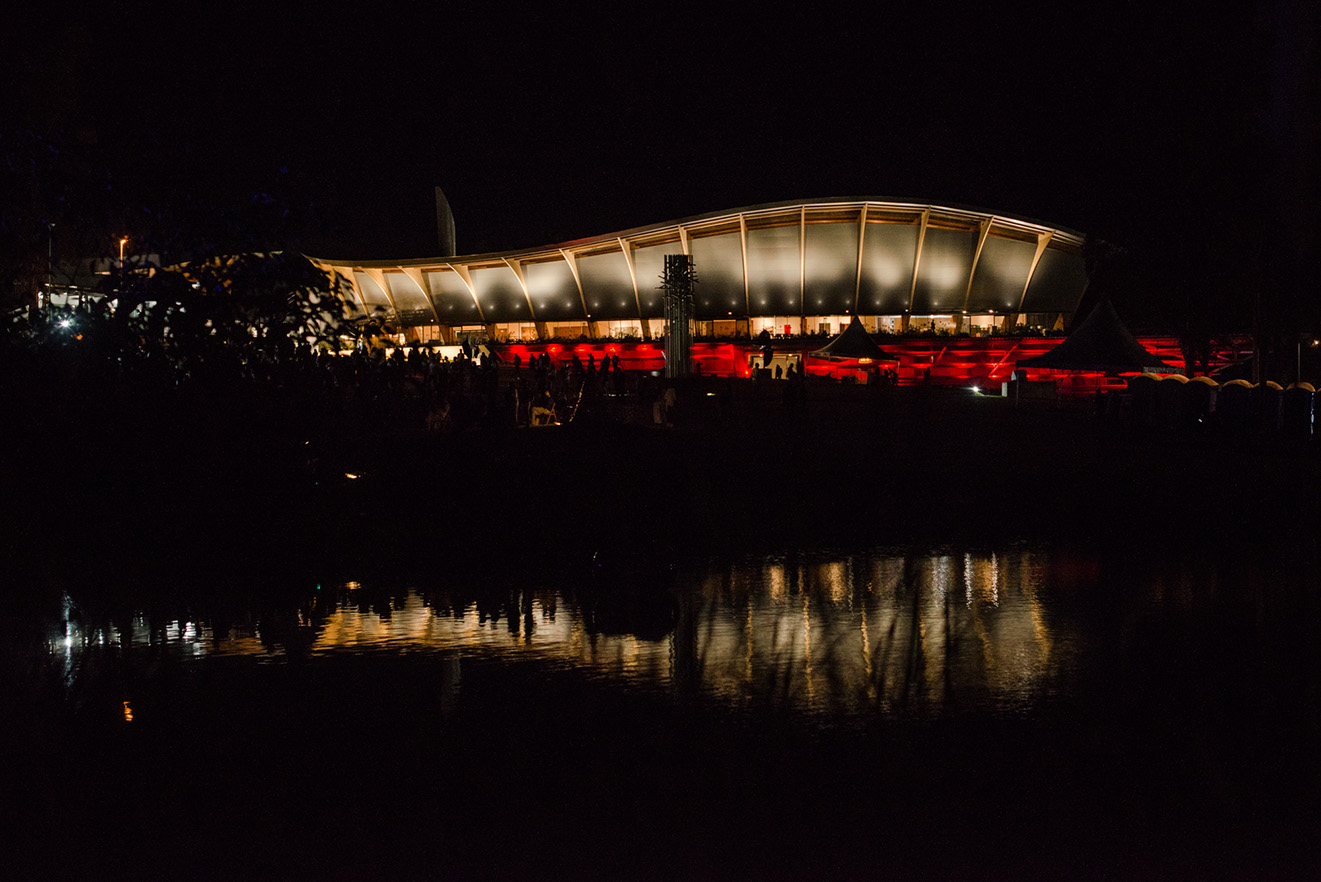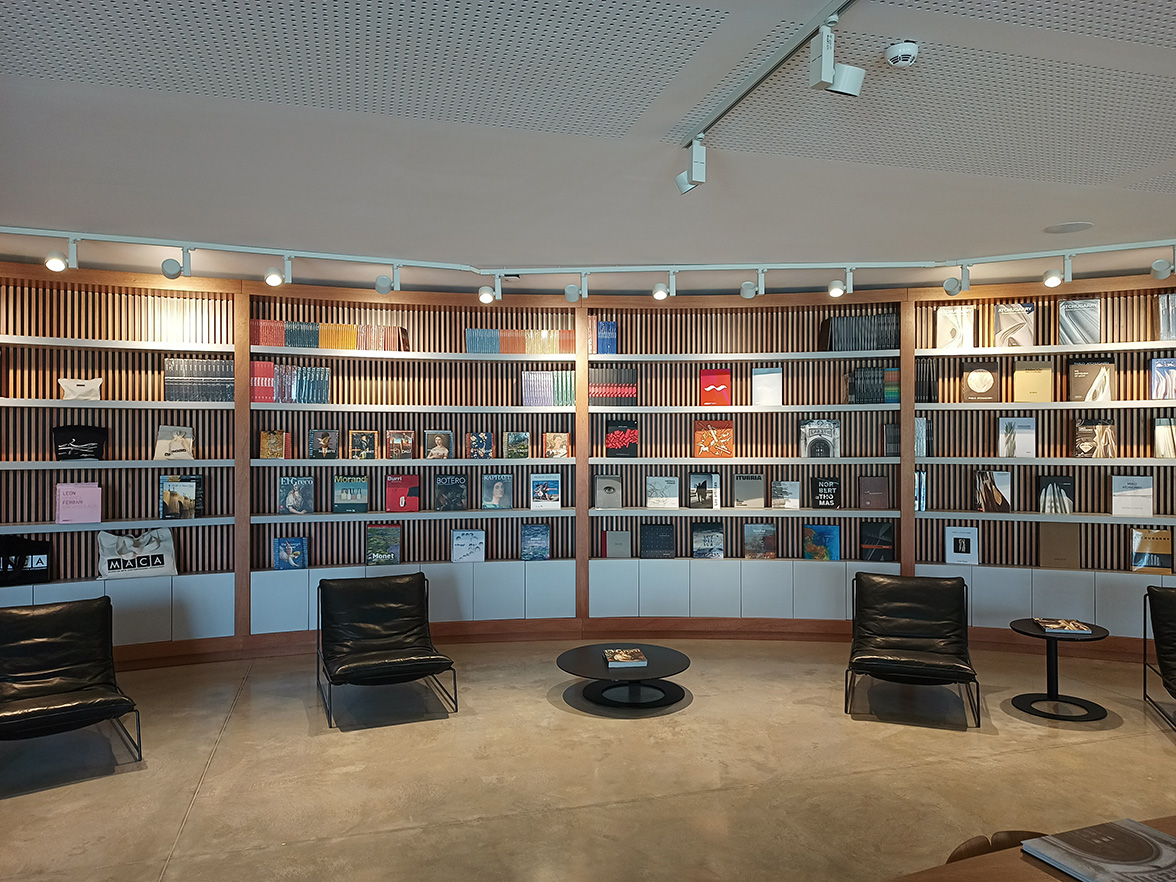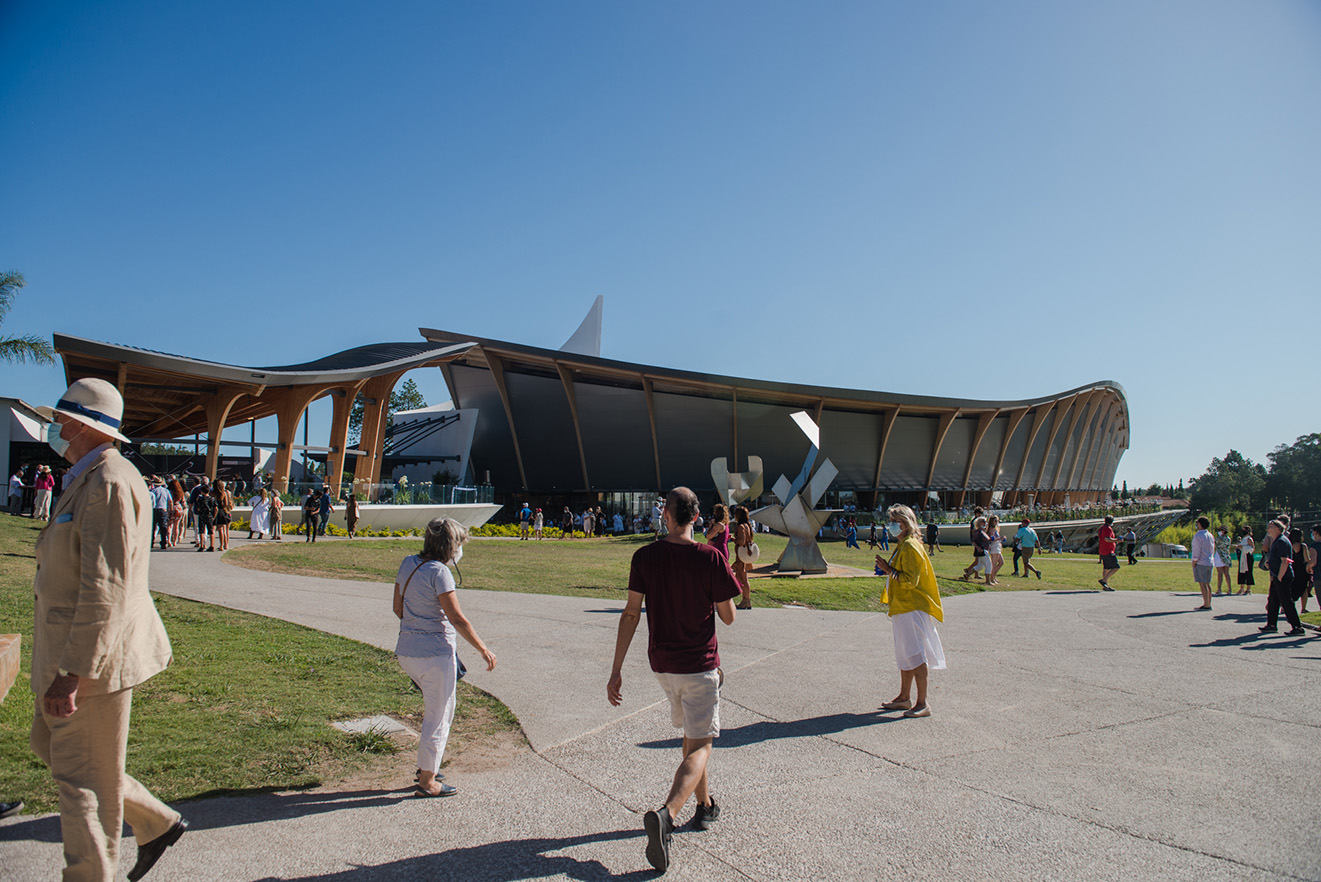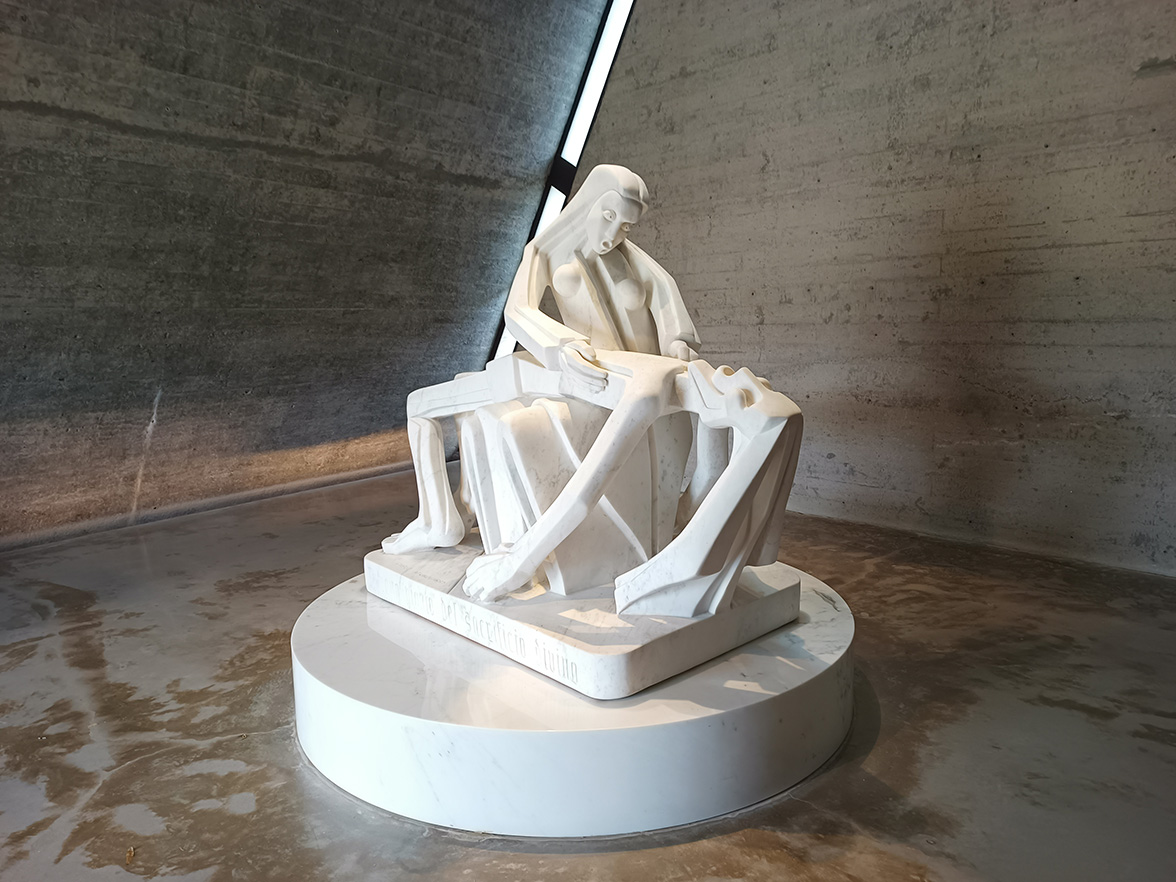The ark of dreams.
It has always been said, perhaps more with the pride of the local than with a tourist and business outlook, that Punta del Este in winter, empty and gleaming, is even more beautiful than in summer. The same could be said of the newly born Atchugarry Contemporary Art Museum (MACA), inaugurated on January 8, 2022, ten, twenty and thirty minutes by car from the most famous beaches in Uruguay, and recently distinguished by the Condé Nast Traveler, a publication specializing in luxury and lifestyle tourism, as one of the best new museums on the planet. Two young Canadians, ecstatic with La Piedad by Pablo Atchugarry, sculptor, homeowner, ideologue of the place and possibly the most universal Uruguayan artist at this time, have the wonderful feeling of having the whole place to themselves, on a bright Friday in May. They do not seem to believe it: there is La Piedad in the Chapel that gives the Sculpture Park a sacred tone, forty green hectares dotted with eucalyptus trees, a bucolic setting in MACA.
And there is the MACA, with its 5,000 square meters built by the architect Carlos Ott, the same Uruguayan hands that drew the Opera Bastille in Paris. Wood reigns, still fragrant. The curved wood gives the building, which reaches 16 meters in height at its highest point, the shape of a giant ark or a whale skeleton. Either of the two comparisons, very dear to Maldonado, the Uruguayan department in which it stands, fits perfectly. None of the wooden structures is the same as another, all of them were sent to France to be treated. And there is the light. Fall hours are 10 a.m. to 6 p.m. daily except Tuesdays; only in the final moments is it necessary to turn on the light in the main multipurpose room, the first of the four that make up MACA.
In these days of autumn lethargy, MACA receives about 600 people per weekend. During Holy Week, which in Uruguay is officially called Tourism Week, 2,000 visitors came per day, attracted by the art, the incredible beauty of the place, the free entrance and the proximity. Being at kilometer 4.5 of Route 104 means being 18 minutes by car from the city of San Carlos and 10 minutes from La Barra de Maldonado. On the day of its inauguration the place received 6,000 pioneers. President Luis Lacalle Pou and former presidents Julio María Sanguinetti and José Mujica were there, so different from each other and so close at the moment. There was Toquinho, who offered a recital, and there was the National Ballet of Sodre, now directed by the consecrated María Noel Riccetto, who gave a performance. There were the inaugural exhibitions of Christo & Jeanne-Claude, a Bulgarian and a Moroccan who have become pinnacles of contemporary art, they met in Paris and loved each other until she left this world, in 2009. There was the work of the Argentine León Ferrari . There was - and is - the permanent collection of Pablo Atchugarry, consisting of more than a hundred works by Latin American, Anglo-American and European artists.
Full joy, on the opening afternoon. Pablo Atchugarry, smiling, shares emotions. courtesy MACA. Photographers: Lorena Larriestra and Nicolás Vidal.
Atchugarry -who lives in Italy half the year- has repeatedly defined MACA -where his workshop and the foundation that bears his name were already located- as a "container of dreams". His dream began almost as a family crusade in 2018; His idea is to position Uruguay on the world route of cultural tourism as well as being a springboard for younger artists. Of the four rooms of the Museum, two will exhibit the permanent collection, compiled over two decades. Dreaming the peace, the work that the artist himself took to the 2003 Venice Biennale to represent Uruguay, a sculptural group of five elements in Carrara and Bardiglio marble, welcomes Room 1, the multipurpose room, which It is called “Kuky, Sergio Gorsskopf and Family”. In this and in Room 3, "Alejandro Guillermo Roemmers", is the collection of the place. This includes early works by the owner of the house, with cement and metal, just him so associated with Carrara marble. Of course there is his first creation with this material: La Lumiere, from 1979.
The beauty of this room is the dialogue between materials, countries and sensibilities: Mariano Rodríguez, Wifredo Lam, Jesús Rafael Soto, Salustiano Pintos, Roberto Matta, Ignacio Iturria, Frank Stella; Uruguay, Argentina, Cuba, United States, Chile, Brazil; stones, carved wood, acrylic, oil on canvas, steel and fiberglass, marble. Made of marble is Madre Cava, the greatest work of Gonzalo Fonseca, one of the disciples of Joaquín Torres García who acquired his own name and flight.
The work of Verónica Vázquez in room 2 of the MACA. Photography: Leonel Garcia.
Room 2 (“Soledad García Lagos de Vivo”) has as its protagonist in these months the work of the Uruguayan Verónica Vázquez. Born in 1970, her work in materials such as rusted iron, sheet metal and steel, thread or rope, using and reusing her raw materials, has already received enough attention to deserve a prominent space. And in Room 4, Martín Pelenur (Uruguay, 1977) exhibits, who handles various techniques in painting, such as varnish, turpentine and acrylic, also appealing to geometry.
The rooms, as well as some seats in the small cinema and multifunction space, and some chairs in the cafeteria are named after friends of Atchugarry and MACA. Complete the Museum, the ark, the mother ship, a design store to buy or read art publications or artists.
That ark is missing its prow. The workers finalize the details with the pretense that everything will be soon by mid-winter. His work is the only vestige that disturbs the sound of silence. By straining your ears a little, in the near distance, you can hear the sea.
Almost exactly four months after it was inaugurated, the Condé Nast Traveler included it in May in a list of the eight best new museums in the world, being the only one in Latin America. The magazine defined it as one of the "most commented cultural openings" in that region. “As an ode to the landscape, the undulating structure rests on sloping beams made from local eucalyptus logs that were custom molded in France. On the perimeter there are abstract marble sculptures carved by Pablo Atchugarry, the Uruguayan artist who was the intellectual author of the entire project.
This distinction positions the Museum and the country in an unprecedented place for the cultural circuit. A pampering to the soul, coincide – more or less words – those who are putting their faces and smiles to the privileged few of the low season. The container of dreams is already fulfilling its mission.
* Special for Hilario. Arts Letters Crafts.




